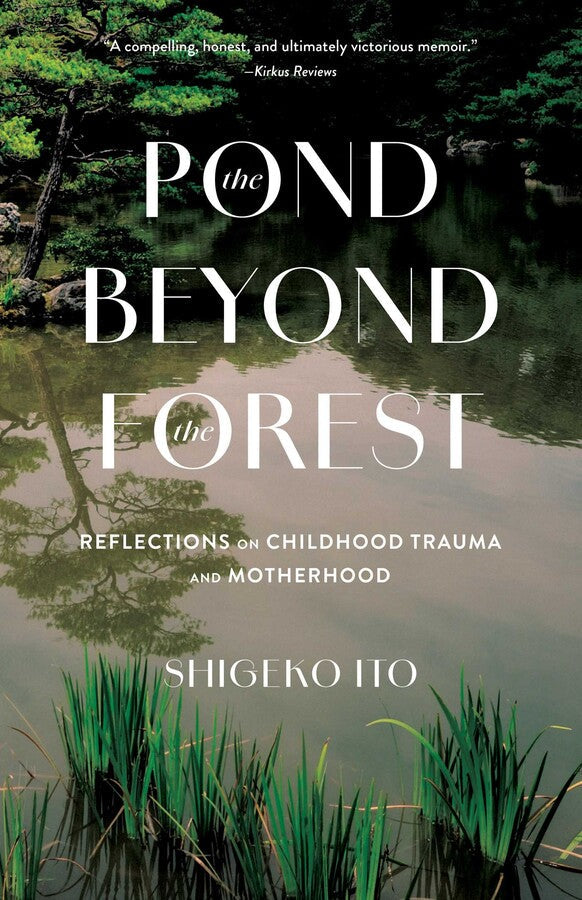Story Skeleton—To the Lighthouse

Story structure relates to the psychological appeal of narrative, that which engages readers and builds in them a sense of anticipation—a desire to know what happens next. This blog series is meant to demonstrate the universality of story structure with plot breakdowns of award-winning and classic novels.
By David Griffin Brown
“A Novel Light on Plot”
As I scrolled through summaries of must-read classics, I came upon To the Lighthouse, which was summarized as “a novel light on plot.” That was when I knew I’d found an excellent candidate for a Story Skeleton. To the Lighthouse is Virginia Woolf’s take on the modernist novel, the plot of which, according to Wikipedia, “is secondary to its philosophical introspection.”
Much has been written about the novel’s English-lit checklist of themes: love, loss, the nature of change, the war between idealism and rationalism, and the impossibility of objective truth. But less has been said about the plot, almost as if the narrative structure doesn’t matter—as if the structure has little bearing on the true greatness of this work: its philosophical underpinnings, POV rollercoaster, and commentary about human nature.
In fact, there is a plot here, though it is hidden below the surface and even disguised by a narrative technique that could be called “multiple focalization” if you want to get fancy, or if not, a masterclass in head-hopping. More importantly, the plot is directly relevant to Woolf’s philosophical and thematic explorations.
The story is summed up as follows: Mr. and Mrs. Ramsay argue about the feasibility of a trip to visit the nearby lighthouse. Then a decade passes, during which Mrs. Ramsay dies. Then Mr. Ramsay sails to the lighthouse with two of his children.
Light on plot? Yes indeed. To be sure, there are other things going on, but the narrative is built around these two movements: debating a trip to the lighthouse and undertaking a trip to the lighthouse. The novel draws its complexity from the roiling thoughts of the Ramsay family and all the guests staying at their summer house in Scotland. In fact, there is little in the way of action or dialogue. For the most part, readers are locked into the various characters’ interiority: what they are longing for, what impassions them, what they hate or fear—and of course, what they think about each other.
But does this count as plot? Doesn’t plot require a protagonist? Doesn’t plot require an inciting incident, an arc, and a climax?
Yes, absolutely. But I contend that these plot elements are present in To the Lighthouse. To uncover them, we must first determine who the protagonist actually is.
So who the heck is the protagonist?
At the start of the book, it’s easy to assume that Mrs. Ramsay is the protagonist. She is the driving force of the conflict, railing against her husband’s pessimism about the weather forecast and longing to fulfill her son James’s wish to go to the lighthouse. Her passion and astute observations are endearing. But then—plot twist—she dies at the midpoint. And her death is relegated to summary.
Could she be the protagonist of the first half of the novel? She does start out with the narrative goal of seeing young James’s wish come true, but she doesn’t have a clear arc. So no, let’s set her candidacy aside.
Another possibility is Lily, a painter friend of the Ramsays. Unlike Mrs. Ramsay, Lily is there at the beginning and the end. She also has a quest of sorts, which is to complete a portrait of Mrs. Ramsay and James. Many of the story’s discussions about subjectivity and the nature of art would be mute without Lily’s contribution. But is this a story framed by the painting of a portrait? No, everything hinges on the lighthouse. And does Lily have the most significant arc? She offers engaging introspection, and some have suggested she is a stand-in for the author, but Lily does not undergo a fundamental change in worldview or perspective.
The character with the most significant arc is Mr. Ramsay. At the beginning of the story, he stands up against Mrs. Ramsay’s idealism as an unwavering rationalist. He is also desperate for his wife’s understanding and encouragement. Mr. Ramsay is plagued by self-doubt and needs constant reassurance. And then his wife dies, leaving him to face the brutal pessimism at the heart of his so-called rationalism. While she was alive and willing to coddle him, Mr. Ramsay could use his rationalism as both a shield and an excuse, but confronted with her absence, he is forced to accept how important her idealism was to his wellbeing. He is forced to concede that rationalism alone is insufficient.
But Mr. Ramsay does not jump off the page as a protagonist, especially since we are inundated with the perspectives of so many characters. Much of what we learn about him is from the outside, through the eyes and minds of others.
With Mr. Ramsay now in focus, let’s look at how the plot showcases his transformation.
Stasis
We don’t get much in the way of stasis since the novel opens with the inciting incident, which we’ll get to in a moment. That’s not unusual—many books skip stasis or even start after the inciting incident. However, the stasis is still implied.
Stasis refers to the time before a protagonist’s narrative goal has crystalized. However, the seeds of that goal often take the form of an underlying motivation. As the story unfolds, we learn that Mr. Ramsay is obsessed with his legacy. He is published in the field of philosophy, but he worries that his contribution may not be significant enough for anyone to remember who he is forty years down the road. Within this worry, we glimpse his greater dilemma: he prides himself on his rationalism, which is actually a front for pessimism and negativity. In other words, Mr. Ramsay’s underlying motivation is to deny that his negativity is anything other than a flexing of his rational powers. This allows him to feign self-assuredness, but beneath the philosopher’s façade, he is very much like his son James—eager for Mrs. Ramsay’s love and reassurance.
Inciting incident
When young James says he wants to visit the lighthouse, Mrs. Ramsay is filled with her character-defining desire to give him what he wants. In fact, she fears that if James encounters a significant disappointment, it could become a memory that will haunt him (and shape him) into adulthood. The subtext here, perhaps, is that he may turn out embittered like his father.
Therefore, Mrs. Ramsay promises that they will organize a trip to the lighthouse at the earliest opportunity. This assertion strikes Mr. Ramsay as irrational. It is yet another example of his wife’s idealism, which he sees in opposition to rationality. The weather is bad, and all signs point to continued wind and rain. Thus, his narrative goal is formed: Mr. Ramsay will not abide his wife’s idealism when it flies in the face of common sense. There is no good reason to make promises to young James when there is little chance of the sea calming enough for such a trip. He is determined to pit his rationalism against her idealism.
Rising action
Tensions rise between husband and wife as they squabble over meteorological predictions. Young James even considers stabbing his father. The conflict spills over into more tension with the other guests. In the end, Mr. Ramsay is correct in his assessment. The storm doesn’t let up. But even so, he is not vindicated. Instead, in the eyes of everyone present, he has made an ass of himself. He has demonstrated how badly he needs to be right, how he needs to be propped up by the reassurances of his wife.
Midpoint reversal
The summer vacation ends, after which the family does not return to Scotland for a decade. This section of the novel takes the form of detached summary. The First World War comes and goes. Mrs. Ramsay passes away, and Mr. Ramsay also loses two children.
A novel’s midpoint can be many things. Sometimes it’s a new opportunity for the protagonist who has otherwise become stuck in their quest (like in Orwell’s 1984). Sometimes it’s a shift in character focus (like in Brontë’s Wuthering Heights). Sometimes it’s a complete reversal that forces the protagonist to reassess their path forward, taking the story in an unexpected direction (like in Lessons in Chemistry).
Mr. Ramsay can no longer pursue his narrative goal of pitting his rationalism against his wife’s idealism. He no longer has her assurances to prop him up, which forces him to contend with his negativity on his own. If he gives in to his negativity, he will remain alone and isolated. Thus, his narrative goal has changed. What he had counted on as a strength of his character has become a flaw. He can no longer reject Mrs. Ramsay’s idealism; instead, he must embrace it.
Much of this happens “off camera” during the decade that is relegated to summary. But we can see evidence of this internal struggle based on what comes next.
The beginning of Mr. Ramsay’s transformation
Also buried in summary is Mr. Ramsay’s all-is-lost moment. But he clearly reaches a point in his grief and isolation where he is forced to see what he has truly lost in his wife’s passing: her positivity, her desire to bring people together, to make people happy. As such, he crosses a threshold when he consents to a reunion vacation at the summer house in Scotland after so many years. He is softening into Mrs. Ramsay’s role and embracing the positivity and idealism that he had for so long shunned as antithetical to his rationalism.
But once at the summer house, Mr. Ramsay demonstrates that he is still mid-transformation. He turns to the artist Lily for the emotional support he used to get from his wife. She pities him for his fragility, and also for how his two surviving children treat him so coldly.
But then Mr. Ramsay proposes they sail to the lighthouse. James is no longer willing, and neither is his sister Cam. They wish for the wind to die down so that the passage becomes impossible. But they accompany their father all the same. At this point, the narration focuses on the interiority of Lily, Cam, and James—all three of them considering Mr. Ramsay’s character, how lonely he is, and how controlling. Lily also thinks a lot about Mrs. Ramsay in contrast, how much she misses her friend. But as the sailboat nears the lighthouse, all three of them shift in their assessment.
The first softening comes when Mr. Ramsay tells Cam not to throw her unwanted sandwich overboard—not to be wasteful. Both siblings have spent most of the trip dreading their father’s “tyranny,” and even though he is telling Cam what to do in this moment, “he said it so wisely,” and then he gives her a gingerbread nut “as if he were a great Spanish gentleman.”
Next, one of the sailors on board points out where a boat went down, and three men died. Both siblings dread their father’s response, but he simply says, “Ah.”
Keep in mind, we’re dealing in subtlety here! “Ah” isn’t much of a comment, but the point is, Mr. Ramsay is bucking their expectations. Even Lily back on shore notes, as if from her artistic intuition, that “Mr. Ramsay changed as he sailed further and further across the bay.”
Next, Mr. Ramsay, always one to criticize, pulls out his watch and notes the quick time they’ve made, and he praises his son for steering them “like a born sailor.” While James gives no outward reaction, Cam knows what an impact this praise will have on her brother. Here is the rebirth of Mrs. Ramsay’s reassurance, passing from father to son.
Climax
When they reach the lighthouse, the protagonist’s transformation is complete. His children have both seen him in a new light, and Lily too senses the change from shore. Again, more artistic intuition.
"He must have reached it," said Lily Briscoe aloud, feeling suddenly completely tired out. For the Lighthouse had become almost invisible, had melted away into a blue haze, and the effort of looking at it and the effort of thinking of him landing there, which both seemed to be one and the same effort, had stretched her body and mind to the utmost. Ah, but she was relieved. Whatever she had wanted to give him, when he left her that morning, she had given him at last.
This is where the story ends—with Lily reflecting on the lighthouse trip as well as on her portrait of Mrs. Ramsay and James. In contrast to Mr. Ramsay’s earlier anxiety about his legacy, she considers that the painting is likely to be hung in an attic or destroyed, but that it doesn’t matter. She has remained true to her vision. This is also the lesson contained within Mr. Ramsay’s transformation: he has opened up; he has softened; he has eased off his need for control. His legacy as a philosopher may still be in doubt, but he has taken new steps toward posterity in his relationship with his children. Here is a legacy that will live on regardless of his intellect.
Point of view
Editors frequently caution writers away from “head-hopping,” which is when the POV jumps from one character to the next within the same scene—even the same paragraph or sentence. Some famous authors still get away with it, but in general, it’s a technique that many readers find sloppy and distracting.
But anything can be done well, especially when it’s done with intentionality. In To the Lighthouse, Woolf is quite purposeful in this choice. For one thing, the novel is a work of literary modernism which was a movement characterized by experimental form, stream-of-consciousness prose, and epistemological themes.
By jumping from one character’s brain to the next, Woolf is able to explore themes such as subjectivity and perception. We learn just as much about each character through the eyes of others as from their own thoughts. This is especially true toward the end as Mr. Ramsay’s transformation is reflected in the subtle changes in perspective of Cam, James, and Lily.
Also, the shifting POV evokes the lighthouse as it shines a rotating beam into the minds of the Ramsays and their gathered friends. Some scholars have suggested the Ramsay summer home might be the narrator. Again, this is because the narrative offers no direct or experiential knowledge of the characters who aren’t present. But if the narrator is the house, then the final sailing trip would fall outside that scope, so it seems more likely that the lighthouse is the narrator.
But the narrator’s identity aside, the head-hopping narration allows for comprehensive insight into each of these characters, from within and without. In other words, Woolf’s POV choice serves the story.
Why To the Lighthouse is a classic

Some readers struggle to get into this novel. The POV shifts can be disorienting. The dearth of plot and stakes can impact engagement. But Woolf’s prose is masterful, and every character is painted with depth and nuance. On top of that, the narrative poses nonstop questions about human perception, awareness, and the nature of knowledge and knowing.
Sigmund Freud’s theories had a strong influence on the modernist writers, and much of that is on display here. Mrs. Ramsay and Lily both demonstrate keen insight into the impacts of their unconscious mind, whereas the other characters are less self-aware—Mr. Ramsay least of all. Plus, the way James adores his mother and hates his father gives off undeniable Oedipal vibes.
The end result is an exploration of gendered psychology, gender norms, logical positivism, and the nature of art. Mr. Ramsay is a needy tyrant who hides behind his intellect while failing to see the strength of his wife’s positivity and idealism. Mrs. Ramsay is a devoted caregiver who takes her caregiving to its own tyrannical extreme by trying to engineer relationships. And Lily is caught between her artistic vision and how others might perceive her work, just as she is at odds with her desire to remain unmarried and her society’s expectations for women to find a partner.
But at the novel’s core is a singular theme that connects the story structure with all of these philosophical questions. In his stasis, Mr. Ramsay holds the misbelief that rationality represents the pinnacle of human cognition, and that legacy is achieved through the power of intellect. Over the course of his journey, he realizes the power of his wife’s emotional intelligence. Therefore, his subverted misbelief gives us the central theme: that neither rationalism nor idealism is superior but are two parts of a greater whole. And through that whole lies authentic connection—something greater than legacy.
In summary: Beam Dreams
Even though the plot in this novel may be light, it still exists, and it plays an integral role in showcasing the transformation of character. Sometimes we have to dig deeper to find things like the structure and the protagonist, but the digging pays dividends in the end, showing us just how malleable structure is and how creative we can get with it.
What’s key to note here is that every one of Woolf’s decisions is intentional, including her choice of POV and what she shows (versus what is implied). She uses a significant midpoint reversal to effect transformation in her protagonist and uses theme to build a bridge between structure and philosophy.
Head Hopping Versus Omniscient Narration Versus Multi-POV: To understand the distinctions between head hopping, omniscient narration, and multi-POV, it’s essential to first define “deep” third-person narration (sometimes referred to as “close” third).
Deep third, the most common POV choice in modern literature, is essentially first person with the pronouns swapped. In deep third, the narrative voice belongs entirely to the focal character. Their thoughts, perceptions, and emotions filter everything on the page. The result is an intimate perspective in which the character’s lived experience and internal voice shape the storytelling.
Omniscient narration, by contrast, is a voice and perspective external to the characters. An omniscient narrator is a distinct, all-seeing storyteller. They may delve into the characters’ minds, revealing thoughts, feelings, and sensory impressions, but their voice remains their own. This externality makes omniscient narration less personal than deep third and more flexible for presenting multiple characters’ experiences without adopting their voices (and therein lies an important but subtle difference).
In contemporary fiction, the line between omniscient narration and deep third often blurs. Head hopping is when these two POV styles get mixed together. Rather than an omniscient narrator reaching into various characters’ minds, head hopping involves shifts from one deep third-person perspective to another—without warning and in the middle of a scene. While some authors get away with head hopping, it will invariably annoy many readers. That’s why most editors advise authors to avoid it.
There is one more option to consider. In a multi-POV novel, the story alternates between two or more characters’ deep third-person perspectives, but these shifts are clearly marked, often with chapter or section breaks. Each POV character gets their own space to fully inhabit the narrative, allowing readers to immerse themselves in one perspective at a time. Typically, multi-POV stories also ensure that each character has a distinct arc, with their own stakes, goals, and development contributing to the larger narrative.
Choosing a Narrator: While it might seem easier to jump around from one character’s head to another, many readers find it distracting. When considering who should tell your story, take a look at the character who has the most significant arc. Usually, this is also the character who has the most to lose if they don’t achieve their narrative goal.

David Griffin Brown is an award-winning short fiction writer and co-author of Immersion and Emotion: The Two Pillars of Storytelling and Story Skeleton: The Classics. He holds a BA in anthropology from UVic and an MFA in creative writing from UBC, and his writing has been published in literary magazines such as the Malahat Review and Grain. In 2022, he was the recipient of a New Artist grant from the Canada Council for the Arts. David founded Darling Axe Editing in 2018, and as part of his Book Broker interview series, he has compiled querying advice from over 100 literary agents. He lives in Victoria, Canada, on the traditional territory of the Songhees and Esquimalt Nations.







